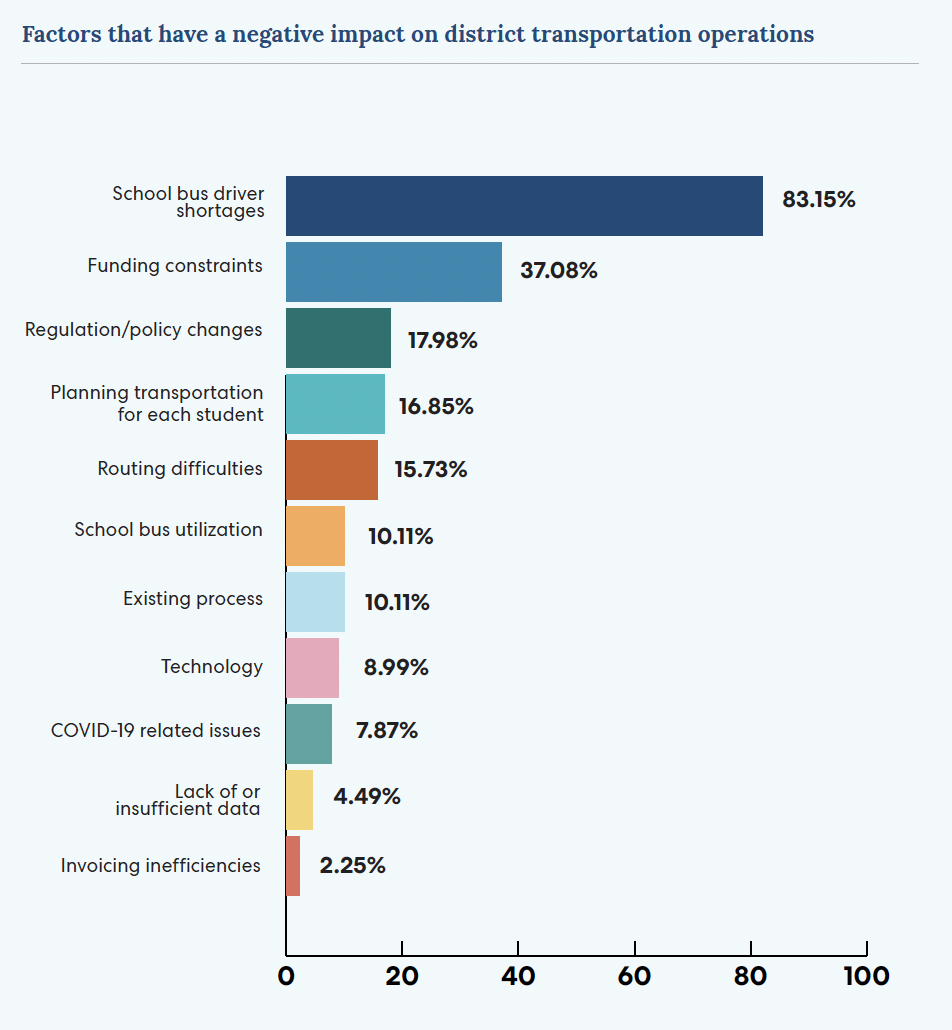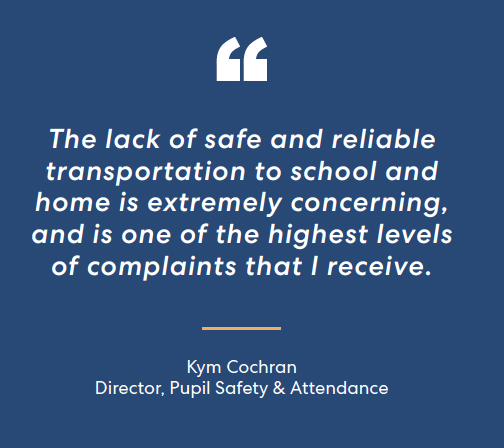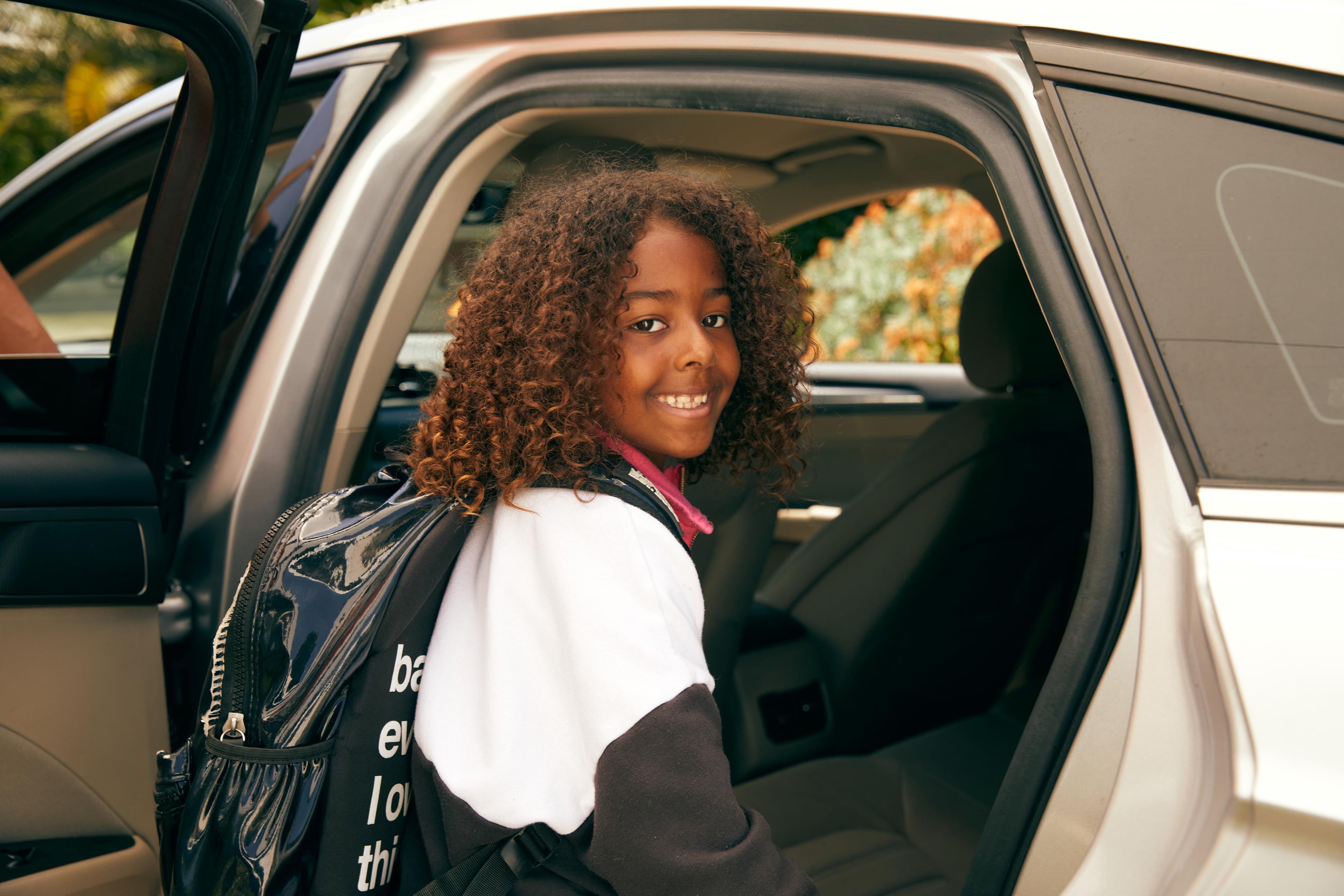Top pain points for school transportation staff today
This year’s State of School Transportation Report unearthed a host of insights from transportation professionals, school administrators, and parents and caregivers.
In this article, we’ll zero in on some of the pain points faced by school transportation and education leaders — and explore how these issues create challenges when it comes to getting students to school consistently.
Finally, we’ll touch on what keeps these hard-working school professionals up at night.
The bus driver shortage remains the top frustration
For the third year in a row, respondents to our State of School Transportation survey reported that the ongoing school bus driver shortage is still the most pressing issue facing schools and districts today. In fact, 83% cited this challenge as the one that is negatively impacting their transportation operations the most.

According to a recent article by Axios, schools nationwide continue to struggle with staffing necessary bus routes. As noted in the 2023 State of School Transportation Report, nearly 40% of respondents said they have been forced to curtail transportation services due to the driver shortage.
As a result, more and more schools are adopting unusual measures to ensure students get to and from school. This includes creative recruiting tactics, expanding walk zones, doubling up on routes, and even asking non-transportation staff to drive buses or assist as bus aides — a tactic that can unfortunately create additional adverse impacts.
“When we combine routes on a temporary basis, it increases student ride times. This occurs on a last-minute basis, making it difficult for families. Additionally, we revert to our mechanics and office staff to fill in, which makes them unavailable to do their job functions.”
—Lori Smith, Transportation Director
The shortage also affects districts’ ability to transport students to field trips, athletics and other enrichment activities. Said another director of transportation: “There are many programs to support student learning in the district, and not enough drivers or time in the day to squeeze it all in.”
Funding constraints and policy changes cause major headaches, too
On top of the ongoing bus driver shortage, transportation providers and school administrators reported that funding constraints (37%) and changes to policies and regulations (18%) are also affecting school transportation operations.
One example is the threat of the ESSER fiscal cliff, which provides the dual challenge for school districts of determining how to allocate unspent ESSER funds before they expire, as well as deciding on and planning for how to fill budget gaps once ESSER funds are no longer available.
A bigger-picture issue is industry policies and regulations. Understandably, they are subject to ongoing (and sometimes frequent) changes, which can be challenging for schools and districts to keep up with. And when regulations aren’t aligned with student needs and the modern realities of school transportation today, they can sometimes make it more difficult for school districts to access new solutions for arranging transportation for the students who need it most.
That being said, 67% of respondents to this year’s State of School Transportation said they do, in fact, use supplemental transportation solutions to help fulfill the transportation needs of students. These solutions were reported to be most often used for students experiencing homelessness who are being transported to their schools of origin per the McKinney-Vento Act (69%), students enrolled in special education programs (60%) and students in foster care (49%).
“Students from target populations (foster youth, homeless, low-Income, etc.) are disproportionately impacted by transportation barriers. If you look at the intersection of these groups and race and income status, it is even more glaring.”
—Anonymous homeless liaison
What keeps school transportation professionals and administrators up at night
Every year, we ask respondents to our State of School Transportation survey: What keeps you up at night? This year, responses showed deep consideration for students, particularly those in the most vulnerable of situations.
“I have a lot of students who are homeless or at risk of being homeless. I worry a lot about them and whether or not they have a safe place to sleep or food to eat.”
—Sunshine Cummins, Independent Study Teacher
One of the most vocalized concerns was students not having access to the transportation they need.

Other issues cited as being top-of-mind for school transportation and education professionals: staffing shortages, chronic absenteeism, ineffective school district policy and the cost of transportation.
Read more about the pain points faced by transportation professionals and school administrators — and what's keeping them up at night — in this year's State of School Transportation Report.
Want to learn more about how HopSkipDrive works alongside school districts to identify untapped funds, understand policy changes, and ensure safe and reliable transportation to and from school for every student?


